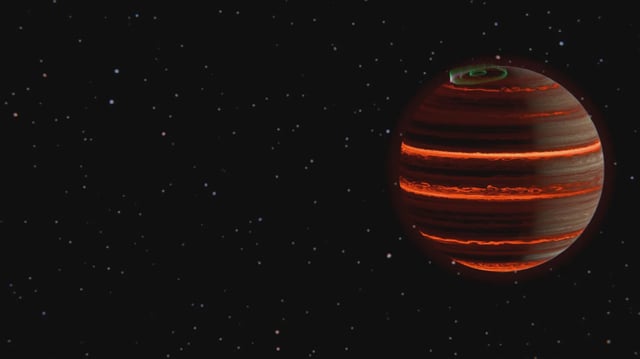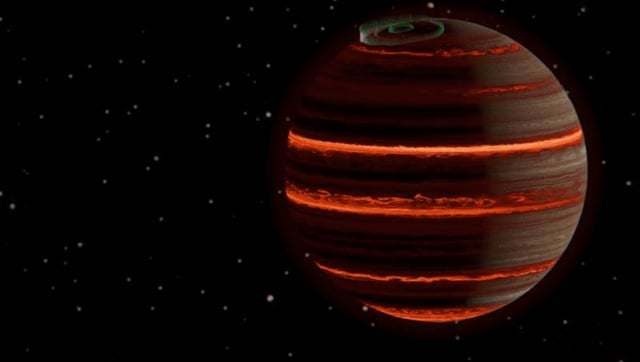Overview
- JWST time-series measurements show the upper atmosphere is roughly 250°C hotter than lower layers, indicating a thermal inversion consistent with auroral energy deposition.
- SIMP-0136 sits about 20–21 light-years away, is estimated near 12–15 Jupiter masses, and completes a rotation in about 2.4 hours, enabling detailed mapping of its atmosphere.
- Spectra reveal near-global clouds made of silicate grains, with coverage that remains surprisingly constant across the surface.
- The team tracked temperature changes smaller than 5°C and linked them to subtle chemical shifts likely associated with rotating storms or hotspots.
- Authors favor a powerful internal magnetic-field mechanism, building on earlier radio-pulse hints, though direct UV auroral signatures and magnetic measurements are still needed.

